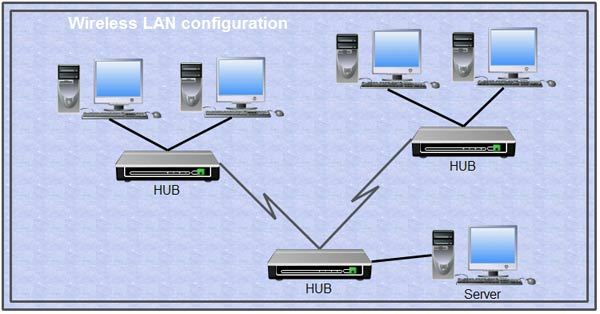Wireless LANs offer the obvious advantage of avoidance of cabling costs, which can be especially important in a dynamic environment where there is frequent reconfiguration of the workplace. Additionally, wireless LANs provides LAN capabilities in temporary quarters where costly cabling would have to be abandoned. Each workstation is fitted with a low power radio antenna.
The antenna is then connected to other hub antennae and to the servers peripherals, and hosts via cabled connections, which also connect together multiple hub antennae for transmission between rooms, floors, and buildings. In order to serve multiple workstations, spread-spectrum radio technology is used to make effective use of limited bandwidth. Spread spectrum involves scattering packets of a data stream across a range of frequencies, rather than using a single transmission frequency. A side benefit of spread-spectrum is that of increased security, as the signal is virtually impossible to intercept.
- Wireless LANs are a relatively immature technology
- Acquisition costs are not particularly low when compared to wired LANs, although reconfiguration costs are virtually nonexistent
- Frequency range – 900 MHz, 2 GHz, and 5 GHz bands
- A hub antenna is located at a central point where line-of-sight can be established with the various terminal antennae
- Bandwidth of a wireless radio LAN – 4 Mbps
- The effective throughput is more in the range of 1 to 2 Mbps per hub
- The infrared transmission technique can also be used. PDA (Personal Digital Assistant) make widespread use of infrared to establish links with workstations and other PDA for data transfer. Enhanced infrared technology recently has been demonstrated at speeds of 1.5, 4, and even 155 Mbps
- Error performance and security are issues of some significance.
Some wireless LANs also use direct sequence transmission meaning that a signal is sent simultaneously over several frequencies increasing the chances that the signal will get through to the access hub.

 Dinesh Thakur holds an B.C.A, MCDBA, MCSD certifications. Dinesh authors the hugely popular
Dinesh Thakur holds an B.C.A, MCDBA, MCSD certifications. Dinesh authors the hugely popular